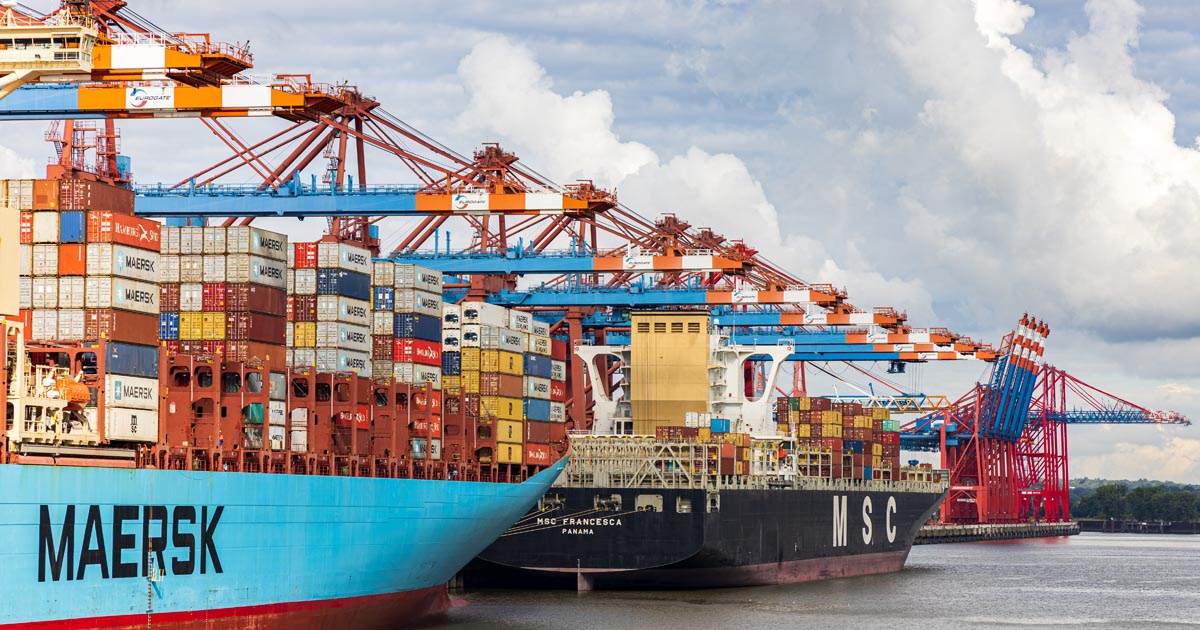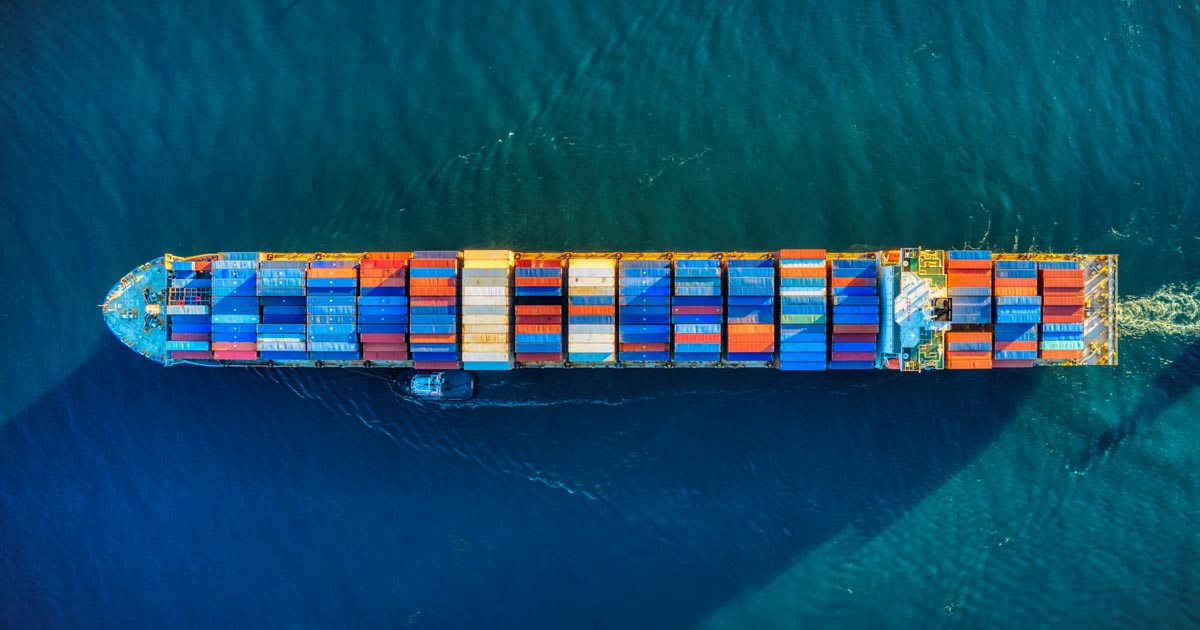Shipping, especially cargo shipping, is determined by enormous price and competitive pressure. However, it is not possible to speak of advanced digitalisation in all areas - although holistic networking systems could do a lot of good for European shipbuilding and the environment.

The organisational effort required to ship a container from Europe to Brazil is enormous: The smooth operation at the container terminal - a process that is hard to keep track of in itself - is only one small piece of the puzzle: the cargo ship has to be supplied with fuel and personnel, maintained or repaired, piloted and navigated through weather events.
All these puzzle pieces in turn depend on their own organisations: Fuel must be supplied in so-called bunker ports, personnel must be changed regularly, maintenance is done in dry docks, and entry into a port depends on the occupancy there and is done by local pilots. The weather can be predicted to some extent, but it cannot be influenced.
But how do you bring all this together? Traditionally, this is the task of shipowners and on-board personnel. But especially in an industry that is under strong time and price pressure, the question of efficiency arises. Up to now, it has unfortunately still been common practice for ship's freight documents to be handed over in printed form from the port to the ship and vice versa. The inspection is done by hand - an insane amount of work for the staff. Processes could also be accelerated in the dry dock: The condition of a ship often only becomes known when it is already in dock. And in some countries, for example Brazil, no advance registrations are allowed at ports, where the rule is "first come, first serve". Docking times of several days are unavoidable.
This somewhat sober assessment was not made only recently. For some years now, intensive research and development has been underway to increase efficiency in cargo shipping with the help of digital means. This also serves the competitiveness of the industry. Inland navigation in particular is losing market share to other means of transport - including road transport. Yet it could drive decarbonisation, as it has a significantly better climate footprint.

The solution seems obvious: instead of time-consuming manual reporting processes, networked management tools should be used to which all parties involved have access. So-called "voyage planning" could thus be made easier for everyone and become "holistic voyage planning". This holistic approach envisages that relevant information is not sent to the stakeholders concerned, but that conversely all stakeholders can access an information system. The prerequisite is that the condition of the ship, the cargo and the suppliers is collected centrally in standardised data.
The advantage: all those involved are no longer dependent on instructions from a coordinating body, but can react independently to changing situations. To give two examples: A freight forwarder bringing a container to the port can orientate itself in terms of time to the arrival of the ship and optimise its own approach, and the dry dock can prepare the necessary repairs and maintenance if it monitors the condition of a ship in advance.
The technical prerequisites for such a system have been in place for a long time. There are also already implementations, but rather in the development stage or in smaller fields of application. The difficulty lies elsewhere: logistics systems span the entire world and must always integrate a multitude of actors. Only international standards can lead to efficient networking in such complex systems, otherwise there is a risk of fragmentation in the industry. The standard container is a positive example: thanks to its standardised dimensions, it can be used internationally and independently of companies. These standards already exist for some areas of shipping. However, they are not yet sufficient for holistic systems.
Smart Shipping on the scale presented here is still a vision. In the EU, however, development projects are now being strongly promoted. The main reason is that most ships are built in Asia because of lower production costs, while in the EU only large specialised ships are built. Networked and autonomous ships therefore represent the greatest hope for the local industry.
The EU-funded flagship project Autoship is currently putting this vision into practice. The aim of the project is to develop two autonomous cargo ships for inland and coastal transport respectively, including research into the economic, social and ecological impact of this technology. The ships will not be steered from their bridge, but only monitored by computer. Once the ships have been developed, they will also be networked with the infrastructure. The technology is promising because ships are easier to control remotely due to their slower speed.
Similar projects are under development for the infrastructure itself: with the help of water and air drones, piers and harbour facilities are to be monitored autonomously. The drones provide data on the condition of the fortifications and the ground conditions, which can then be automatically evaluated. This should prevent breakdowns and accidents at an early stage.
Although there is still a long way to go, it cannot be said that there are no developments in smart shipping. The efficiency and competitiveness of maritime logistics is certainly the main focus of current efforts, but digitalisation will also change cargo shipping - and is already doing so.
Individual elements in supply chains already have a very high degree of connectivity. Shipment tracking is not only in high demand by private customers when delivering parcels: logistics companies and recipients of large goods transports have a great interest in tracking the exact course of a shipment. Many freight companies therefore already allow the precise tracking of freight by means of attached GPS transmitters.
This data is not only interesting for the companies directly involved. The meticulous tracking of shipments can also be used, for example, to trace the origin of products and raw materials. This can make quality seals more credible, make the supply chain verifiable in terms of human rights and enable insurance companies to provide guarantees about the careful handling of the transported goods. Seamless monitoring of a delivery can also prevent fraud or theft.
Digitisation in cargo shipping is not yet particularly well developed when one looks at logistics as an overall system. Many individual participants in the freight process can already demonstrate a high degree of digitalisation - be it in the tracking of individual containers, in the handling of freight in high-tech ports such as the Port of Hamburg or in pilot projects for autonomous shipping. What is still missing are holistic networked systems that bring all these puzzle pieces together in a standardised way. Jointly defined standards and objectives are indispensable for this. However, many projects and visions suggest that digitalisation of the maritime sector can bring a lot of good to the industry itself, the economic sectors that depend on it and also the environment.
Text: Nils Bühler
Most popular